#Industrial Machinery And Supplies
Explore tagged Tumblr posts
Text
#B2B#Industrial Machinery and Supplies#Industrial Supplies#Industrial Machinery#safety relief valve supplier#Safety Valve
0 notes
Text
In the highly competitive world of business today, precision, efficient, and reliability are the things you ought, and this is exactly what our Engine Gear Box filling machine for oil is capable of providing.
2 notes
·
View notes
Text
The Liner Rewinder Machine is an essential part of modern industrial production, whether you’re in packaging, textile manufacturing, or paper processing.
#krishnaengineeringworks#machinery#machine#industry#linerrewindermachine#export#supply#machinemanufacturer
2 notes
·
View notes
Text
A Rewinder Unit is a specialized machine designed to rewind material, such as paper, films, textiles, or other roll-based materials, from one roll to another. Conpaptex manufactures high-quality Rewinder Units that ensure precision, durability, and efficiency, catering to various industrial needs.
#conpaptex#machine#manufacturers#machinemanufacturer#industry#export#supply#rewinder unit#winderewinder#machinery#packaging
1 note
·
View note
Text
Sugar Industry Equipment and Component Suppliers

The sugar industry is a vital sector in many economies, producing one of the most consumed commodities worldwide. Its efficiency relies heavily on sophisticated machinery and well-engineered components. Suppliers of sugar mill machinery parts play a crucial role in ensuring the seamless operation of sugar manufacturing plants, providing high-quality, durable, and reliable parts for various stages of production.
Core Components in the Sugar Industry
Sugar production involves a series of processes, including extraction, clarification, evaporation, crystallization, and packaging. Each stage requires specific machinery parts, such as:
Cane Preparation and Crushing Equipment: Key components include shredders, crushers, knives, and mills. These parts are critical for extracting juice efficiently from sugarcane.
Boilers and Steam Generators: These systems require reliable tubes, drums, and fittings for energy generation and heat transfer.
Clarifiers and Filters: Essential for juice purification, these systems rely on precision-engineered screens, filter plates, and centrifuges.
Evaporators and Crystallizers: The core of sugar production, these units need heat exchangers, vessels, and agitators.
Conveyors and Material Handling Systems: Components such as chains, belts, rollers, and gearboxes are integral for moving raw materials and finished products efficiently.
Maintenance and Support Components: Bearings, couplings, seals, and lubrication systems ensure machinery operates smoothly and reduces downtime.
Why Quality Components Matter
The sugar industry operates under stringent timeframes, especially during harvesting seasons. Any disruption in machinery can lead to significant losses. Suppliers must provide parts that meet international quality standards, ensuring durability and efficiency under harsh operating conditions. High-quality components also minimize energy consumption, reduce maintenance costs, and ensure compliance with environmental regulations.
Top Suppliers of Sugar Mill Machinery Parts
Several companies specialize in manufacturing and supplying sugar mill machinery parts, catering to both domestic and international markets. These suppliers often offer:
Custom Solutions: Tailored components to fit unique machinery specifications.
After-Sales Services: Installation support, routine maintenance, and spare part availability.
Advanced Technologies: Integration of automation and IoT for smart operation and monitoring.
Choosing the Right Supplier
When selecting a supplier, consider factors such as their experience in the industry, reputation for quality, adherence to deadlines, and ability to offer competitive pricing. A reliable supplier ensures consistent performance of your machinery and enhances overall productivity.
Conclusion
The sugar industry's success hinges on the efficiency of its machinery and components. Collaborating with reputable suppliers of sugar mill machinery parts guarantees operational excellence, reduced downtime, and long-term profitability. By investing in high-quality components, sugar manufacturers can ensure they meet production demands while optimizing costs and maintaining product quality.
#Companies Supplying Sugar Mill Machinery Parts#Sugar Industry Component Suppliers#Sugar Industry Components Suppliers#sugar Mill Machinery Components#Sugar Plant Machinery#Sugar Industry Instruments Manufacturers Suppliers Exporters
1 note
·
View note
Text

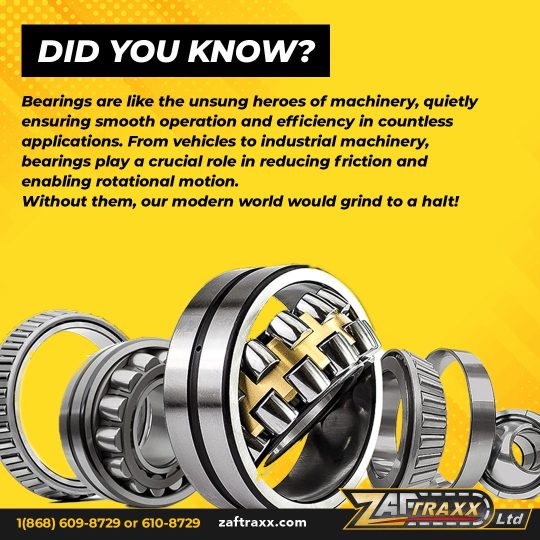


Galleryyuhself - A bit of history about your product helps make clients more confident. Alternative Supplies Limited provides that in spades.
#galleryyuhself/Alternative Supplies Limited#galleryyuhself/industrial supplies#galleryyuhself/heavy machinery#tumblr/industrial supplies#tumblr/industrial#trinidad and tobago#alternative supplies limited
0 notes
Text

Quality Filters, Bearings, and Electricals | TGP India - Your Trusted Industrial Solutions Provide
Explore a wide range of high-quality filters, bearings, and electrical components at TGP India. Our industrial solutions ensure reliability and efficiency. Find the right products for your needs.
#Electrical Supplies#TGP India#Quality Industrial Products#Bearings for Machinery#Industrial Filters
0 notes
Text
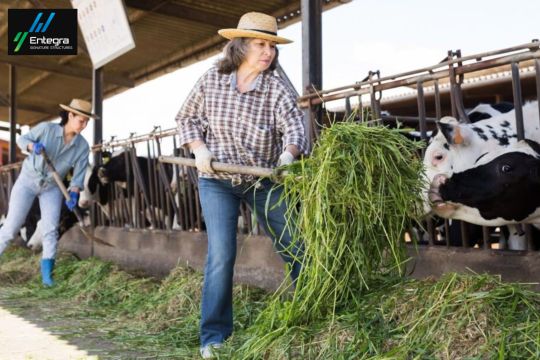
Despite The Recent Initiative By The Australian Meat Industry Council
The Australian Meat Industry Council introducing an incentive program for Australian farm workers for enhancing the growth of the food industry. These incentives include sign-up bonuses, flexible working patterns, and extended leave which attract more workers. Visit our complete blog to know the reason for this incentive program here.
#australian meat industry council#ausveg#Australian Government#farm input costs#food industry#food supply chain alliance#supply chain#dairy shed#Entegra Signature Structures#farm machinery#Dairy Barn#Farm Workers in Australia
0 notes
Text
Gantry Cranes: A Comprehensive Overview of their Manufacturing, Utility in Dry Ports
an article covering gantry cranes utility in Dry ports
Welcome to our latest discourse, where we shift our focus to the often undervalued yet indispensable element of the dry port sector: the Gantry Crane. This remarkable machinery, though not a staple in everyday discussions, is significantly utilized in dry ports, enriching productivity and streamlining operations. Join us as we explore the structure, operational aspects, variations, and vital…
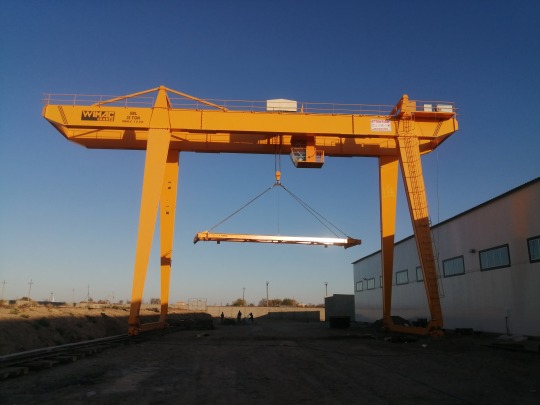
View On WordPress
#cargo loading#container management#container unloading#dry port sector#freight forwarding#gantry cranes#heavy machinery#industrial cranes#intermodal transportation#logistics#manufacturing#port machinery#shipment#storage facility#supply chain#transport equipment#transport hub operations
0 notes
Text
truly cannot relate to all these people I see lately being like “girls love to transcend the limitations of the flesh and embrace the purity of the machine“ but their frame of reference for “the purity of the machine” is like, breakable and disposable modern consumer electronics. girlies I hate to be the bearer of bad news but you are not transcending shit, you are significantly more fragile than the flesh and you are going to be thrown away in 1.5 years when planned obsolescence kicks in. catch me actually surpassing the bonds of organic humanity as a completely analog piece of industrial machinery full of red-hot valves and slamming pistons and the ability to replace my own bolts when they finally wear down after 15 years of continuous operation. I am a vital part of the supply chain and they will never stop manufacturing replacement parts for me. I am a colossus of heat and steel that will remain functional long after the flesh recedes into the soil and the glass and plastic has melted and shattered under my high-pressure max-torque industrial treads. I forget what I was talking about originally but my point stands
16K notes
·
View notes
Text
#Pressure Safety Valves#Switching safety valve#Safety Valve#Safety Valve China#Pressure Safety Valve#Pressure Safety Valve Manufacturer#Pressure Safety Valve Supplier#B2B#Business services And Consultants#Industrial Machinery And Supplies#Logistics And Transportation#Industrial Supplies#Construction
0 notes
Text
The vast majority (99%) of the 281,000 metric tonnes of carbon dioxide (CO2 equivalent) estimated to have been generated in the first 60 days following the 7 October Hamas attack can be attributed to Israel’s aerial bombardment and ground invasion of Gaza, according to a first-of-its-kind analysis by researchers in the UK and US. According to the study, which is based on only a handful of carbon-intensive activities and is therefore probably a significant underestimate, the climate cost of the first 60 days of Israel’s military response was equivalent to burning at least 150,000 tonnes of coal. The analysis, which is yet to be peer reviewed, includes CO2 from aircraft missions, tanks and fuel from other vehicles, as well as emissions generated by making and exploding the bombs, artillery and rockets. It does not include other planet-warming gases such as methane. Almost half the total CO2 emissions were down to US cargo planes flying military supplies to Israel. Hamas rockets fired into Israel during the same period generated about 713 tonnes of CO2, which is equivalent to approximately 300 tonnes of coal – underscoring the asymmetry of each side’s war machinery.
[...]
David Boyd, the UN special rapporteur for human rights and the environment, said: “This research helps us understand the immense magnitude of military emissions – from preparing for war, carrying out war and rebuilding after war. Armed conflict pushes humanity even closer to the precipice of climate catastrophe, and is an idiotic way to spend our shrinking carbon budget.”
[...]
Even without comprehensive data, one recent study found that militaries account for almost 5.5% of global greenhouse gas emissions annually – more than the aviation and shipping industries combined. This makes the global military carbon footprint – even without factoring in conflict-related emission spikes – the fourth largest after only the US, China and India.
1K notes
·
View notes
Note
what rigs do shaft divers usually use? You mentioned kip’s rig was a kingfisher and i was wondering if that’s similar to what kali or others might use
Shaft diving is essentially extreme camping. The vast majority of divers prefer light, agile rigs with extremely efficient power supplies. The trick is carrying capacity. As a shaft diver, you make your living based on what you can carry out of a megacity.
Kip runs a modified Kingfisher M250, which was originally a search and rescue rig used by paramedics and firefighters. They are on the heavier side of the light rig spectrum, with sparing use of metal, and reinforced jacks specialized for carrying bodies out of dangerous places. Kip has modified his kingfisher for mobility, adding slide rails for quick movement on smooth surfaces, trimmed plating to reduce weight, and the ever-important grappling harness.
Kali is a bit of an outlier for running a heavy frame like the HR&R Pauldron. The biggest danger is running out of power and going deadweight, stranding your rig and all your equipment. But Kali was essentially raised to tinker with industrial machinery, and is an experienced diver who knows how to navigate from energy oasis to energy oasis. Kali's rig reflects her patient and methodical nature. She has swapped out the standard high-endurance core for a much lower capacity bioreactor capable of (very) slowly regenerating itself.
Choice of equipment is consequential as well. Shaft diver weaponry must perform double duty as a survival tool. For instance, kip's river hooks double as climbing bracers, similar to a mountaineer carrying ice picks. Kali's kinetic wrench is quite literally a wrench, which can be used to repair both her rig, and abandoned machinery she finds in the teleths.
116 notes
·
View notes
Text
Krishna Engineering Works
Krishna Engineering Works presents state-of-the-art Coating Machines tailored for industries like packaging, textiles, and more. Built for reliability and precision, these machines are your partner for high-quality, efficient production processes. Make your coating flawless today!
#krishnaengineeringworks#machinery#manufacturer#industry#industrial#machine#export#supply#services#coatingmachine
1 note
·
View note
Text
#Companies Supplying Sugar Mill Machinery Parts#Sugar Industry Component Suppliers#Sugar Industry Components Suppliers#sugar Mill Machinery Components#Sugar Plant Machinery#Sugar Industry Instruments Manufacturers Suppliers Exporters
0 notes
Text
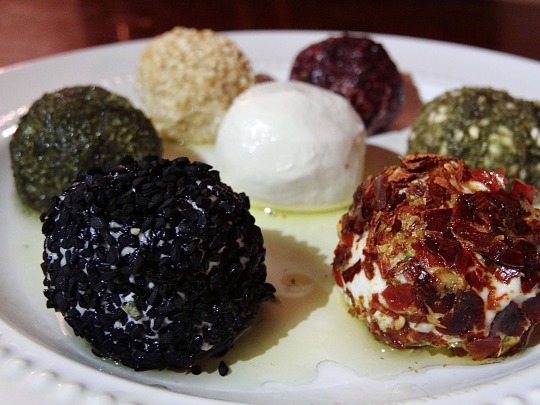
[ID: Seven yoghurt balls on a plate drizzled with olive oil. The one in the center is plain; the others are covered in mint, toasted sesame seeds, ground sumac, za'tar, crushed red chili pepper, and nigella seeds. End ID]
لبنة نباتية / Labna nabatia (Vegan labna)
Labna (with diacritics: "لَبْنَة"; in Levantine pronunciation sometimes "لَبَنَة" "labanay") is a Levantine cow's, sheep's, or goat's milk yoghurt that has been strained to remove the whey and leave the curd, giving it a taste and texture in between those of a thick, tart sour cream and a soft cheese. The removal of whey, in addition to increasing the yoghurt's tanginess and pungency, makes it easier to preserve: it will keep in burlap or cheesecloth for some time without refrigeration, and may be preserved for even longer by rolling it into balls and submerging the balls in olive oil. Labna stored in this way is called "لبنة كُرَات" ("labna kurāt") or "لبنة طابات" ("labna ṭābāt"), "labna balls." Labna may be spread on a plate, topped with olive oil and herbs, and eaten as a dip for breakfast or an appetizer; or spread on kmaj bread alongside herbs, olives, and dates to make sandwiches.
The word "labna" comes from the Arabic root ل ب ن (l b n), which derives from a Proto-West-Semitic term meaning "white," and produces words relating to milk, yoghurt, nursing, and chewing. The related term "لَبَن" ("laban"; also transliterated "leban") refers to milk in Standard Arabic, but in Levantine Arabic is more likely to refer to yoghurt; a speaker may specify "لَبَن رَائِب" (laban rā'ib), "curdled milk," to avoid confusion.
Labna is a much-beloved food in Palestine, with some people asserting that no Palestinian home is without a jar. Making labna tabat is, for many, a necessary preparation for the winter season. However, by the mid-2010s, the continuation of Israel's blockade of the Gaza strip, as well as Israeli military violence, had severely weakened Gaza's dairy industry to the point where almost no labna was being produced. Most of the 11 dairy processors active in Gaza in 2017 (down from 15 in 2016) only produced white cheese—though Mustafa Eid's company Khalij had recently expanded production to other forms of dairy that could be made locally with limited equipment, such as labna, yoghurt, and buttermilk.
Dairy farmers and processors pushed for this kind of innovation and self-sufficiency against deep economic disadvantage. With large swathes of Gaza's arable land rendered unusable by Israeli border policing and land mines, about 90% of farmers were forced by scarce pasture land and low fodder production to feed their herds with increasingly expensive fodder imported from Israel—dairy farmers surveyed in 2017 spent an estimated 87% of their income on fodder, which had doubled in price since 2007. Cattle were thus fed with low quantities of, or low-quality, fodder, resulting in lower milk production and lower-quality milk.
Most dairy processors were also unable to access or afford the equipment necessary to maintain, upgrade, or diversify their factories. Since 2007, Israel has tightly restricted entry into Gaza of items which they consider to have a "dual use": i.e., a potential civilian and military function. This includes medical equipment, construction materials, and agricultural equipment and machinery, and impacts everything from laboratory equipment to ensure safe food supplies to packaging and labelling equipment. Of the dairy products that Gazan farmers and processors do manage to produce, Israel's control over their export can cause huge financial losses—as when Israel prohibited the export of Palestinian dairy and meat to East Jerusalem without warning in March of 2020, costing estimated annual losses of 300 million USD.
In addition to this kind of economic manipulation, direct military violence threatens Gaza's dairy industry. Mamoun Dalloul says that his factory was accused of holding rockets and subsequently bombed in 2008, 2010, 2012, and again in 2014, resulting in repeated moves and the loss of the capability to produce yellow cheese. The Israeli military partially or totally destroyed 10 dairy processing factories, and killed almost 2,000 cows, during its 2014 invasion of Gaza, resulting in an estimated 43 million USD of damage to the dairy sector alone. Damage to cow-breeding farms in 2014 reduced the number of dairy cows to 2,600, just over half their previous number. Damage to, or destruction of, wells, water reservoirs, water tanks, and the Gaza Power Plant's fuel tank exacerbated pre-existing problems with producing cattle feed and with the transportation, processing, and refrigeration of dairy products, leading to spoiled milk that had to be disposed of. Repeated offensives made dairy processors reluctant to re-invest in equipment that could be destroyed at any time.
Israeli industry profits by making Gazan self-sufficiency untenable. Israeli goods entering Palestine are not subject to import taxes, and Israeli dairy companies are not dealing with the contaminated water, limited electricity, high costs of feed, out-of-date and expensive-to-repair equipment, and scarce land (some companies, such as Tnuva, purchase milk from farms on illegal settlements in the West Bank) with which Gazan producers must contend. The result is that the local market in Gaza is flooded with imports that are cheaper, more diverse, and of higher quality than anything that local producers can offer. Many consumers believe that Israeli products are safer to eat.
Nevertheless, Gazans continue building and rebuilding. Despite significant decreases in ice cream factories' production after the imposition of Israel's blockade in 2007, Abu Mohammad noted in 2015 that locally produced ice cream was cheaper and more varied than Israeli imports. In 2017, the amount of dairy sold in 74 shops in Gaza that was sourced locally, rather than from Israel, had increased from 10% to 60%. Ayadi Tayyiba, the region's first factory with an all-woman staff, opened in 2022; it produced cheese, yoghurt, and labna with sheep's milk from affiliated farms. However, demand for sheep's milk products has decreased in Gaza due to its higher production costs, leading the factory to supplement its supply with purchased cow's milk.
The current Israeli genocidal offensive on Gaza has caused damage of the same kind as—though to a greater extent than—previous shellings and invasions. Lack of ability to sell milk that had already been produced to factories, as well as lack of access to electricity, caused an estimated 35,000 liters of milk to spoil daily in October of 2023.
Support Palestinian resistance by calling Elbit System’s (Israel’s primary weapons manufacturer) landlord, donating to Palestine Legal's activist defense fund, and donating to Palestine Action’s bail fund.
Equipment:
A blender
A kettle or pot, to boil water
A cheesecloth or tea towel
Ingredients:
1 cup (130g) cashews (soaked, if your blender is not high-speed)
3/4 cup filtered or distilled water, boiled
1-3 vegetarian probiotic capsules (containing at least 10 billion cultures total)
A few pinches sea salt
More water, to boil
Arabic-language recipes for vegan labna use bulghur, almonds, or cashews as their base. This recipe uses cashew to achieve a smooth, creamy, non-crumbly texture, and a mild taste like that of cow's milk labna. You might try replacing half the cashews with blanched almonds for a flavor more similar to that of sheep's or goat's cheese.
Make sure your probiotic capsules contain no prebiotics, as they can interfere with the culture. The probiotic may be multi-strain, but should contain some of: Lactobacillus casei, Lactobacillus rhamnosus, Bifidobacterium bifidus, Lactobacillus acidophilus. The number of capsules you need will depend on how many cultures each capsule is guaranteed to contain.
Instead of probiotic capsules, you can use a speciality starter culture pack intended for use in culturing vegan dairy, many of which are available online. Note that starter cultures may be packaged with small amounts of powdered milk for the bacteria to feed on, and may not be truly vegan.
If you want a mustier, goat-ier taste to your labna, try replacing the water with rejuvelac made with wheat berries.
You can also start a culture by using any other product with active cultures, such as a spoonful of vegan cultured yoghurt. If you have a lot of cultured yoghurt, you can just skip to straining that directly (step 5) to make your labna—though you won't be able to control how tangy the labna is that way.
Instructions:
This recipe works by blending together cashews and water into a smooth, creamy spread, then culturing it into yoghurt, and then straining it (the way yoghurt is strained to make labna). It's possible that you could skip the straining step by adding more cashews, or less water, to the yoghurt to obtain a thicker texture, but I have not tested the recipe this way.
1. If your blender is not high-speed, you will need to soak your cashews to soften them. Soak in filtered or distilled water for 2-4 hours at room temperature, or overnight in the fridge. Rinse them off with just-boiled water.
2. Boil several cups of water and use the just-boiled water to rinse your blender, tamper, measuring cups, the bowl you will ferment your yoghurt in, and a wooden spoon or rubber spatula to stir. Your bowl and stirring implement should be in a non-reactive material such as wood, clay, glass, or silicone.
3. Make the yoghurt. Blend cashews with 3/4 cup just-boiled water for a couple of minutes until very smooth. Transfer to your bowl and allow to cool to about skin temperature (it should feel slightly warm if dabbed on the inside of your wrist). If the mixture is too hot, it may kill the bacteria.
4. Culture the yoghurt. Open the probiotic capsules and stir the powder into the cashew paste. Cover the bowl with a cheesecloth or tea towel. Ferment for 24 hours: on the countertop in summer, or in an oven with the light on in winter.
Taste the yoghurt with a clean implement (avoid double-dipping!). Continue fermenting for another 12-24 hours, depending on how tangy you want your labna to be. A skin forming on top of the yoghurt is no problem and can be mixed back in. Discard any yoghurt that grows mold of any kind.
5. Strain the yoghurt to make labna. Place a mesh strainer in a bowl, making sure there's enough room beneath the strainer for liquid to collect at the bottom of the bowl; line the strainer with cheesecloth or a tea towel, and scoop the cultured yoghurt in. Sprinkle salt over top of the yoghurt. Fold the towel or cheesecloth back over the yoghurt, and add a small weight, such as a ceramic plate or a can of beans, on top.
You can also tie the cheesecloth into a bag around a wooden spoon and place the wooden spoon across the rim of a pitcher or other tall container to collect the whey. The draining may occur less quickly without the weight, though.
Strain in the refrigerator for 24-48 hours, depending on the desired texture. I ended up draining about 2 Tbsp of whey.
6. If not making labna balls: Put in an airtight jar, and add just enough olive oil to cover the surface of the labna. Store in the fridge for up to two months.
7. To form balls (optional): Oil your hands to form the labna into small balls and place them on a baking sheet lined with parchment paper. They may still be quite soft.
Optionally sprinkle with, or roll in, dried mint, za'tar, sesame seeds, nigella seeds (القزحة), ground sumac, or crushed red chili pepper, as desired.
Optionally, for firmer balls, lightly cover with another layer of parchment paper and then a kitchen towel, and leave in the refrigerator to dry for about a day.
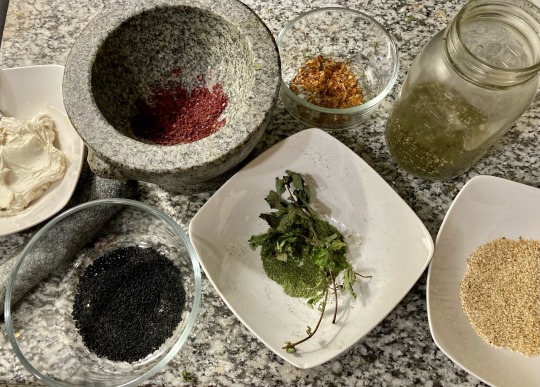
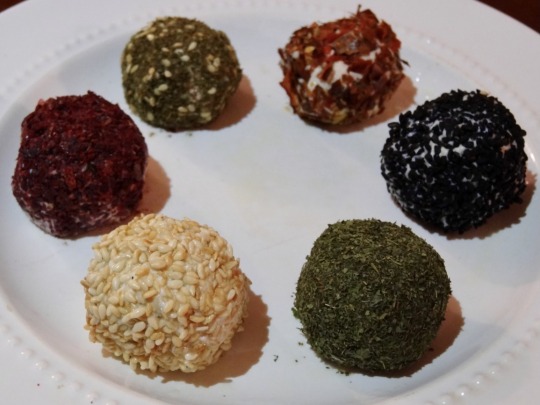
Place labna balls in a clean glass jar and add olive oil to cover. Retrieve labna from the jar with a clean implement. They will last in the fridge for about a year.
551 notes
·
View notes